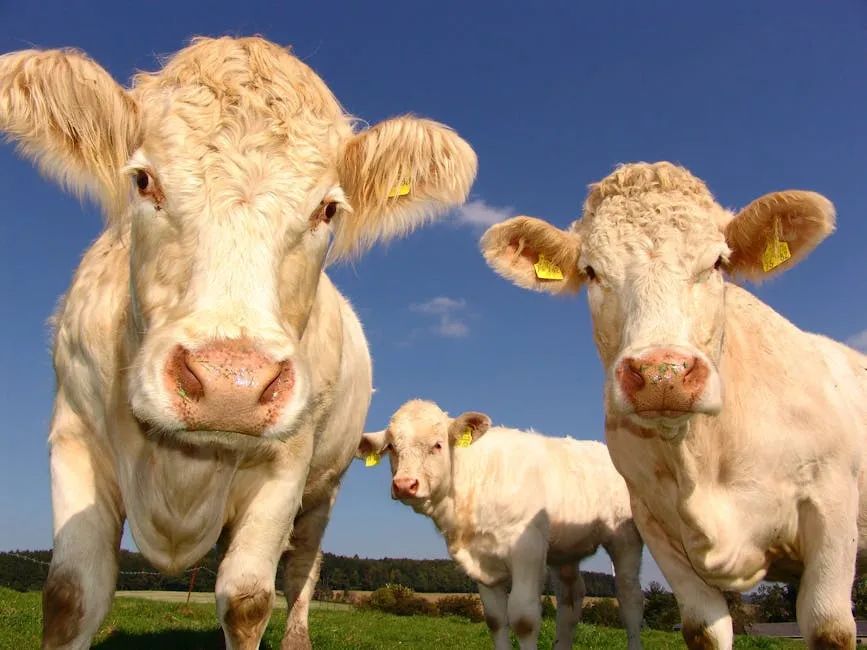Mini cows are gaining popularity among hobby farmers and homesteaders for their smaller size, easy care, and ability to produce milk. Unlike their full-sized counterparts, mini cows take up less space, require less food, and are easier to manage, making them an ideal choice for those who want the benefits of owning a cow without the challenges of handling a larger animal. In this article, we will explore the key details about mini cows, including their height, weight, habitat, and how they produce milk.
Mini cows are a smaller breed of cattle that have been selectively bred to maintain the characteristics of full-sized cows while being much smaller in size. They come in various breeds, with the most common being Mini Jerseys, Mini Herefords, and Lowline Angus. Despite their size, mini cows can serve many of the same purposes as regular cows, including milk production and meat, or simply as pets and companions.

One of the primary distinctions between mini cows and standard cows is their smaller size. Miniature cows typically range from 36 to 42 inches (91 to 107 cm) in height when measured at the shoulder. Some "micro" versions of mini cows may be even shorter, standing less than 36 inches tall.
In terms of weight, mini cows usually weigh between 500 to 800 pounds (227 to 363 kg), significantly less than the 1,000-2,000 pounds that full-sized cows can weigh. The reduced weight and size make mini cows easier to handle, transport, and care for, particularly for small farms or those without heavy-duty equipment.
Mini cows are adaptable animals that thrive in a variety of climates, provided they have access to appropriate shelter, food, and water. They require less space than full-sized cows, making them well-suited for small homesteads or farms.
For a mini cow, you should allocate around 1 to 2 acres of land per cow, depending on the availability of grazing. They are pasture-based animals, so having a grassy area where they can graze is ideal. However, if fresh pasture isn't available year-round, they can be fed with hay and supplementary grains during winter months.
Shelter is also important, especially in harsh weather conditions. A simple, three-sided barn or covered area will protect them from rain, snow, and extreme heat. In colder climates, ensuring they have access to a dry, warm area is essential to keep them healthy.
One of the most common reasons people raise mini cows is for their milk production. While mini cows don’t produce as much milk as full-sized dairy cows, they still provide more than enough for a small family.
A typical mini cow can produce between 1 to 1.5 gallons (3.8 to 5.7 liters) of milk per day, depending on the breed, diet, and how frequently they are milked. This is considerably less than the 6 to 8 gallons a day that full-sized cows can produce, but it’s a manageable amount for homestead use without overwhelming the farmer with excess milk.
To maximize milk production, mini cows need to be milked at least once a day. Their diet plays a crucial role in the quality and quantity of their milk, so it's essential to feed them a balanced diet that includes high-quality pasture, hay, and grains rich in nutrients. Ensuring access to clean water and providing mineral supplements will also help keep them healthy and maintain milk quality.
Most mini cows begin producing milk after giving birth, just like full-sized cows. This is known as the "freshening" process, and cows typically calve once a year to maintain steady milk production.
Raising mini cows for milk has several benefits over larger dairy cows, especially for small-scale farmers or hobbyists. Here are a few reasons why mini cows are an attractive option for milk production:
Smaller Space Requirements: Mini cows need less pasture, less shelter space, and smaller barns, making them ideal for small farms or homesteads.
Lower Feed Costs: Because they are smaller, mini cows consume less food compared to full-sized dairy cows. They can graze efficiently on smaller plots of land and require less supplemental feeding.
Easier to Handle: Due to their smaller size and lower weight, mini cows are easier to manage and less intimidating to handle. This makes them a good option for families or individuals who may not have experience with large livestock.
Adequate Milk for Family Use: With mini cows producing around 1 to 1.5 gallons of milk per day, this amount is ideal for personal consumption, making butter, cheese, yogurt, or other dairy products without producing an overwhelming surplus.
Environmentally Friendly: Mini cows have a lower environmental impact than larger cows, as they require fewer resources, such as food, water, and space, to maintain.
Mini cows are a wonderful option for those interested in raising cattle for milk production, meat, or companionship. Their smaller size, reduced feed needs, and easy handling make them ideal for small-scale farmers or homesteaders looking for sustainable livestock. With proper care, mini cows can thrive in various habitats, provide high-quality milk for families, and enrich their owners' lives with their gentle and friendly personalities.
Whether you are a new farmer or an experienced homesteader, mini cows offer a practical and rewarding opportunity to raise livestock without the challenges that come with larger cattle breeds.
animal tags: Mini-cows
We created this article in conjunction with AI technology, then made sure it was fact-checked and edited by a Animals Top editor.